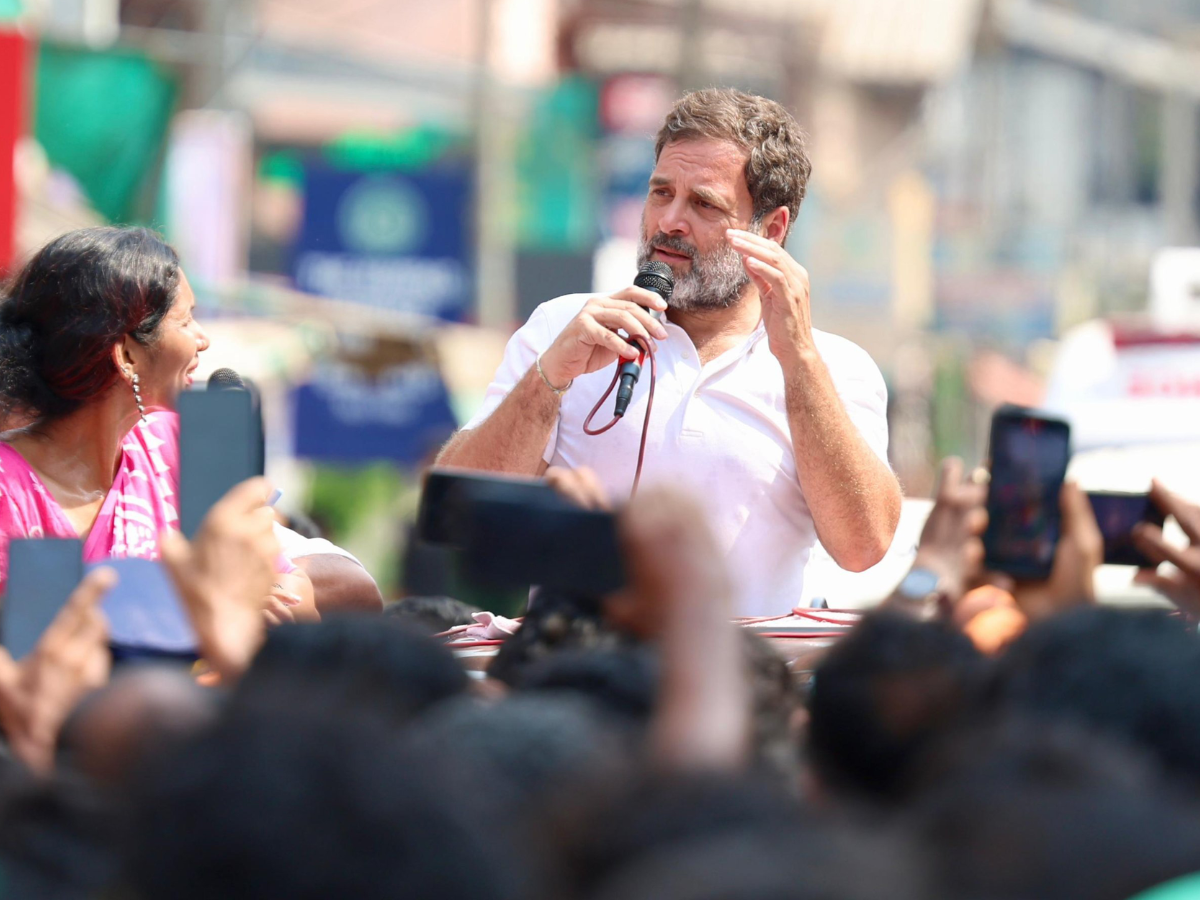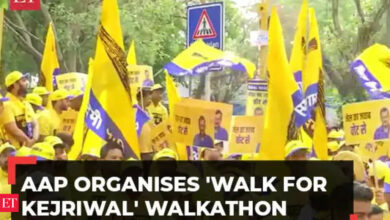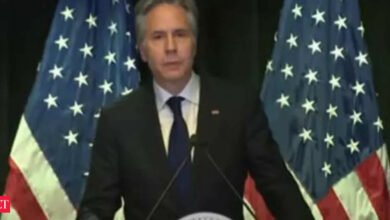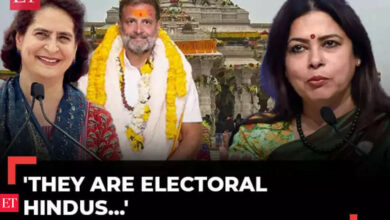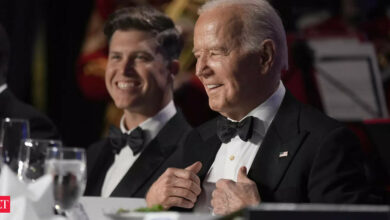Wealth redistribution: The economics behind Rahul Gandhi’s ‘Robin Hood’ idea
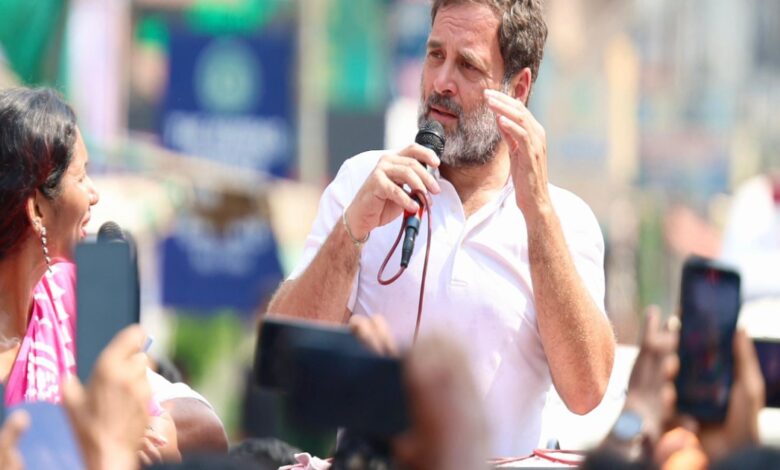
Yesterday, adding that opposition parties had done nothing for Muslims, he reiterated his allegations, saying that the Congress was “looking to survey earnings and wealth of people, including their vehicles, property, and houses to redistribute it in line with a communist ideology that INDIA wanted to implement in the country”.
What did Rahul Gandhi say
Rahul on Saturday said the Congress, if voted into office in the Lok Sabha elections, would conduct a financial and institutional survey to ascertain who is in possession of the wealth of the country, and would then undertake an exercise to redistribute the same. He also promised representation of each community in every sector.
- All
- Uttar Pradesh
- Maharashtra
- Tamil Nadu
- West Bengal
- Bihar
- Karnataka
- Andhra Pradesh
- Telangana
- Kerala
- Madhya Pradesh
- Rajasthan
- Delhi
- Other States
Releasing the party’s poll manifesto at a public meeting in Tukkuguda near Hyderabad, he stressed on “jitni aabadi, utna haq” principle. “First, we will conduct a caste census…to know the exact population and status of backward castes, SCs, STs, minorities and other castes. After that, the financial and institutional survey will begin. Subsequently, we will take up the historic assignment to distribute the wealth of India, jobs and other welfare schemes to these sections based on their population,” he said.
While Rahul Gandhi’s plan sounds like a simple ‘Robin Hood’ scheme to rob the rich and pay the poor, an extensive debate has been going on for some time on the idea of wealth redistribution. In old times, the idea was central to communist revolutions but in recent times economists have argued on wealth distribution due to rising income inequality. Though a basic redistributive principle is already inherent in government policies such as progressive taxation in which the rich pay more tax or subsidies and freebies for the poor such as free foodgrains, there has been a demand for radical steps. The basis of current debate on wealth redistribution is an economic study that came just when Rahul’s comments came.
The rising inequality and the need for a supertax on the rich
India’s inequality gap has widened sharply under PM Modi’s decade in power, with the richest 1% of the population now owning 40% of the country’s wealth, as per a recent study done by several economist including globally renowned Thomas Piketty, who had also helped Rahul frame his idea of minimum income guarantee in 2019. The inequality gap widened after the economy’s opening up in the early 1990s, but “between 2014-15 and 2022-23, the rise of topend inequality has been particularly pronounced in terms of wealth concentration”, the economists said in the report titled ‘Income and Wealth Inequality in India: The Rise of The Billionaire Raj’, and published by The World Inequality Lab. “In the post-liberalisation years of high growth and rising inequality, the middle class (middle 40%) appears to have lost out significantly,” the researchers said.
Between 1961 and 1981, the middle class and richest 10% had nearly identical share in wealth. But over the next three decades, the share of the top 10% pulled ahead while the middle 40% consistently fell to reach 31% by 2012 to 29% by 2023.
Based on figures from the World Inequality Database, India’s income inequality is among the very highest in the world, behind only Peru, Yemen and a few other small countries, the authors said.
However, the trend in India is in line with the experience of other major economies. The study shows that between 1980 and 2014, income of top 0.1 per cent income earners in France and China rose six times faster than the income of bottom 50 per cent. In India, the growth rate of top 1 per cent was 13 times higher, while it was nearly 77 times higher in the US.
The inequality gap will likely not close on its own without policy intervention, the researchers said, suggesting imposing a “super tax on Indian billionaires and multimillionaires, along with restructuring the tax schedule to include both income and wealth”.
In 2022, an Oxfam India study said Indian billionaires saw their combined fortunes more than double during the Covid-19 pandemic, and their count shot up by 39 per cent to 142. It said if the wealth of the first 100 billionaires is accumulated, they could fund the National Rural Livelihood Mission scheme, responsible for creating Self Help Groups for women, for the next 365 years. It said a 4 per cent tax on the wealth of the 98 billionaires would be enough to fund the Mission POSHAN 2.0, which includes Anganwadi Services, POSHAN Abhiyan, Scheme for Adolescent Girls, and National Creche Scheme, for 10 years.
What the critics say
Writing in ET, Bibek Debroy, Chairman, Economic Advisory Council to Prime Minister, and the Council’s assistant consultant Aditya Sinha argue that inequality is a relative measure, and it is not a concern if it coincides with improvement in people’s lives. Responding to the above-mentioned report, they write, “Econ 101 teaches us that as an economy grows, so does inequality, a concept illustrated by the Kuznets curve. Living standards of India’s poorest have improved significantly, a reality underscored by improvements in the Bare Necessities Index and Multidimensional Poverty Index (MDPI). NITI Aayog has shown that 24.82 cr Indians have escaped multidimensional poverty in the last nine years, thanks to schemes such as Jal Jeevan Mission, Swachh Bharat Mission, PMJAY, PMAY or PM Ujjwala.”
“Milton Friedman and Friedrich Hayek argued that redistributive policies can stifle innovation and productivity. If individuals feel their efforts will be heavily taxed or redistributed, they may not be motivated enough to invest in new ventures or improve productivity, leading to an economic slowdown,” they write.
“The underlying intent is vilification of those who generate wealth, casting them as adversaries rather than contributors to economic prosperity. The state is bound to address issues of equity. But this doesn’t mean that the right to private property is challenged in the state’s attempt to address the problem of inequality,” they argue.
Atanu Biswas, a professor at the Indian Statistical Institute, Kolkata, claims that the World Inequality Lab report is rich in drama and poor in numbers. He says the latest report is based on data their earlier study scored low on transparency. Saying that no estimate is better than “weird” estimate, he writes, “One can wonder how the income distribution was estimated in the first place, given India doesn’t have any official income surveys. Did they make a lot of assumptions while using auxiliary data?”
Writing on the 2022 World Inequality Lab report by Piketty and his colleagues, which too had asked for high taxes on the rich, columnist Swaminathan S Anklesaria Aiyar had argued that Piketty and his colleagues ignore that the interests of the rich and the poor converge actually. “Voters are happy to vote for politicians like Joe Biden who propose higher taxes to fund better childcare, health, college education and infrastructure. But these are modest tax measures. They will not reverse rising inequality, which is fuelled above all by fiscal and monetary stimuli to accelerate economic growth,” he wrote.
“Politicians of all stripes like stimuli because voters do too. But while stimuli raise employment and wages, they increase property and stock market wealth even more. Piketty and Co ignore the extent to which the interests of the poor and rich converge. The rich gain most in booms and lose most in recessions, yet voters prefer booms. Left intellectuals have failed to convince voters of any clear link between soaking the rich and enriching the masses,” Iyer wrote.
What lies ahead?
While Rahul’s radical plan to map everyone’s assets, including land, cash, jewellery, etc, and then equally divide them among everyone may not sound practical, the ‘tax-the-rich’ debate is not going to die down anytime soon in India or the rest of the world. However, heavy taxes on the rich can be highly counter-productive especially for a growing economy like India. Indira Gandhi’s Garibi Hatao plan included the highest income tax rate of 97.75% and wealth tax of 3.5%, and yet poverty only rose instead of decreasing.
The governments all over the world face the difficult task of balancing fiscal prudence, welfare spending and economic growth. The Modi government, despite its heavy spending on welfare, thinks India should pay more attention to economic growth as a primary means of decreasing poverty rather than expending more resources on curtailing inequality as redistribution will be better achieved if the size of the pie increases.
The beginnings of the current ‘tax-the-rich’ debate lie in the demand for a basic universal income which had started gaining prominence nearly a decade ago. Rahul too had batted for a basic universal income in the past but the idea of wealth redistribution seems to be an egregious iteration of the sentiment. The Opposition’s promise of big freebies and welfare measures as well as the Modi government’s mega schemes such as free foodgrain and a fixed cash transfer to poor farmers, all are the result of increasing demands for higher government spending on the poor.
(With inputs from TOI and agencies)
Source link

